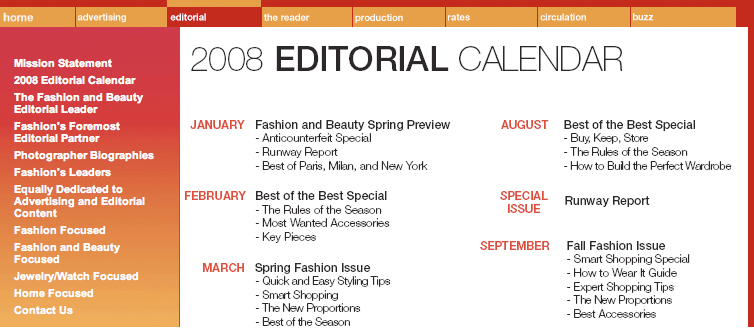With creating a personal website being easier than ever, the trend is still swinging wildly upward when it comes to the “everyday-people” building anything from a personal blog or a small online shop, to even soon-to-be huge companies (we all wish, anyways). No longer is your website just the gateway into your business; it’s a one-stop marketing/buying/publication/customer service shop. In that way, your website really does hold the key to growing the exact kind of business and lifestyle you’ve always dreamed of.
Optimizing your site for conversions is one thing when you’re a web designer or developer, but it’s another thing entirely for the rest of us. While you could certainly learn some basic code to up your game, it’s best to save the landing page design for the designers, and focus on the marketing strategies you can do on your own. Here are five things you can’t afford not to consider.
1. Brand Yourself
With the world open to you via the web, there’s a place for just about every niche, and even among those that are already crowded, there’s always room for one more unique and compelling voice. To really brand yourself, you’ve got to:
● Find a niche and stay there. If you already have expertise in or passion for something, great; start there. For most website owners, however, I can guarantee you that your supposed niche is too broad because, well, that’s just the way newbie entrepreneurs roll. Use the Google keyword tool to find what your audience is searching for, narrowing in on keywords with high search volumes and low competition rates. Then adjust accordingly based on Google Analytics data (see below) or according to the levels of user engagement. And don’t worry, you can always expand your focus later. Better to start narrow and widen from there than to be known (or not known at all) as the Jack of all trades, master of none.
• Establish your distinctive voice. Remember the days when the personal and the professional were to be kept entirely separate? Yeah, not when you’re running a website in a flooded market. If you have a distinctive sense of humor, use it (as long as it’s not too offensive). If you’re great at telling stories, tell them. If you’re an expert in law enforcement issues and work at an ironing board rather than a desk, become the iron desk law officer. Draw comics. Share photos. Get up close and personal with followers on social media. This is one case in which being as distinctively you as possible is more than just a confidence booster.
2. Make an Editorial Calendar
One of the most assured ways to get noticed online is to have an SEO-minded content strategy. Developing an editorial calendar is a great method for keeping your site engaging and keyword rich, while also encouraging conversions. Great content, after all, is just the thing you need to pull casual visitors into a newsletter sales funnel. A few things to think about:
● Establish goals from the get-go. Are you looking to sell products? How about advertising space? Or are you just looking to build an engaged community or establish yourself as an expert so that you can secure better jobs? Clarify it upfront, and let these goals guide your content strategy.
● Use data to brainstorm. Sure, you can free associate for a while, but most often, the best ideas come out of the data. Look up important dates in the industry to be sure you have something relevant to write around that time. Again, use Google Adwords to get a better sense of what customers are asking, and then use that to brainstorm expertise posts. Build in time for brand-building personal posts, guest posts, experimental or themed posts, and spontaneous posts for whatever comes up during the year. While the monthly and weekly template calendars at the Content Marketing Institute are useful, those a regular calendar can work just as well.
3. Do Some Market Research
Before you can target your audience, you have to know who they are and what makes them tick. How else are you going to not only hook them into your site, but also motivate them to answer your calls to action? A good look into demographics and psychographics will be well worth the effort. A few good questions to ask:
● Where do my customers live?
● What is their level of income?
● What level of education do they have?
● What are their hobbies, interests, and personalities?
● What is their biggest problem?
● Do they have kids?
● What do they really want to know?
● [Insert your questions here, gleaned from your industry expertise].
Amazon’s Ecommerce Software offers some great case studies for those looking to do a little homework on people who have already gone through the entire process.
4. Monitor Bounce Rates with Analytics
Launching a successful website is like doing a science experiment. Your first launch is for your first set of hypotheses, and then it’s time to do your measurements and adjust accordingly. For a good grounding in analytics, I highly recommend reading this excellent Google Analytics guide, which covers everything from getting going to advanced subjects, like setting up segment reporting.
While you’ll use your Google Analytics dashboard to adjust your SEO strategies, one of the most important things you can track will be your bounce rate, which is, essentially, when someone visits your page once and never returns. This can indicate a lack of interest in the content on your site, or a deep interest in only that single landing page as opposed to further material or products located deeper in the site. If you’re seeing high bounce rates, you might want to tweak your Calls to Action and make sure they appear above the fold, while also linking to more of your own internal pages throughout your posts. You’ll also want to pay attention to the posts where users spend the most time and consider adding more of similar content.
5. Test the Speed of Your Site
Plain and simple: speed matters. If your site doesn’t load in a matter of seconds, that viewer will be out of there. Since many users have outdated modems, you’ll have to account for a wide range of connections, ensuring that your site takes no more than 8 seconds to load on a 56K modem. That’s a tricky thing when you’re simultaneously trying to engage viewers with large photos or videos. Test out your site speed with a site speed tester, and if it’s too slow, consider hosting your site with a Content Distributed Network (CDN), which powers faster site speeds, video encoding, and video streaming.
Along the same lines, make sure that your site layout is intuitive. Users shouldn’t have to (and won’t) click more than a few times to get to where they want to go. Get ‘em in there quick.
Take-Away
There’s a lot to do when you’re marketing a new website, but starting with these five basic tips is a great way to get going. Plus, they’re fun to do, too, as you find your site’s distinctive personality. Explore these various techniques, and see what takes!















































